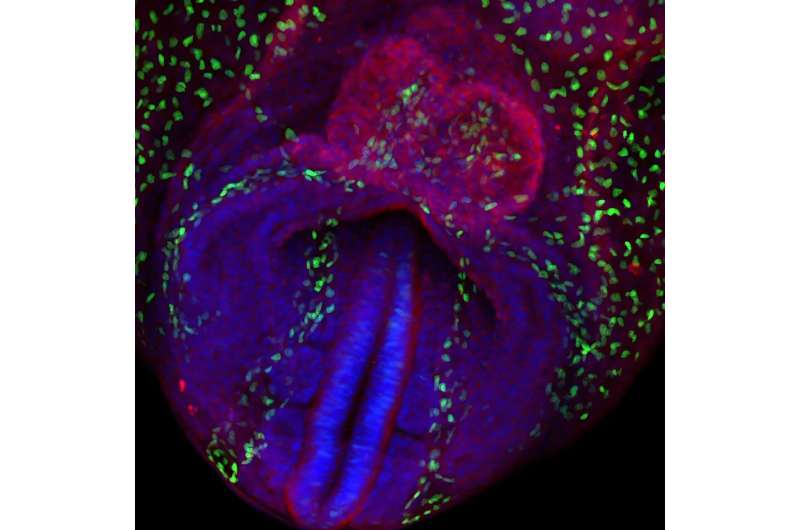A study published today in the journal Developmental Cell uncovers new insights into how the heart forms during the earliest stages of embryonic development.
The research, led by scientists at the Centro Nacional de Investigaciones Cardiovasculares (CNIC), shows that the heart originates from two distinct cell populations that form independently—but in a coordinated manner—from the very beginning of development: specifically, from the onset of gastrulation, the process by which the embryo begins to organize its basic cellular layers.
“This discovery is highly significant,” says CNIC scientist Miguel Torres, head of the Genetic Control of Organ Development and Regeneration Group and senior author of the study together with Miquel Sendra. “It helps us understand how the heart is structured in its earliest phases, which may allow us to identify the roots of certain congenital heart defects. It also opens new doors for regenerative medicine and tissue bioengineering.”
Until now, it was thought that cardiomyocytes—the muscle cells of the heart—and endocardial endothelial cells—which line the heart’s inner surfaces—originated from a single precursor population.
However, the new study, based on in vitro mouse embryo culture, advanced microscopy, and cell tracing techniques, reveals that these two cell types originate from separate regions within the mesoderm, one of the three germ layers of the early embryo.
Although they develop separately, the two cell populations enter the embryo simultaneously and migrate in a coordinated fashion toward the region where the primitive heart tube begins to form. According to the researchers, this synchronized behavior points to the presence of highly precise organizational mechanisms at a stage when the embryo still lacks most visible structures.

The study also shows that despite being fated to form the heart, these cells retain the potential to contribute to the development of other organs—highlighting their versatility and importance in early embryogenesis.
Both lead authors, Miguel Torres and Miquel Sendra, emphasize that this advance was made possible through fundamental research aimed at generating new knowledge without immediate clinical application, stating, “It is important to underscore the value of this type of science, driven by intuition, perseverance, and creative freedom, as a cornerstone of scientific progress.”
More information:
Miquel Sendra et al, Myocardium and endocardium of the early mammalian heart tube arise from independent multipotent lineages specified at the primitive streak, Developmental Cell (2025). DOI: 10.1016/j.devcel.2025.05.002
Provided by
Centro Nacional de Investigaciones Cardiovasculares Carlos III (F.S.P.)
Citation:
New findings reveal how the heart is organized from the earliest stages of embryonic development (2025, May 29)
retrieved 31 May 2025
from https://medicalxpress.com/news/2025-05-reveal-heart-earliest-stages-embryonic.html
This document is subject to copyright. Apart from any fair dealing for the purpose of private study or research, no
part may be reproduced without the written permission. The content is provided for information purposes only.


